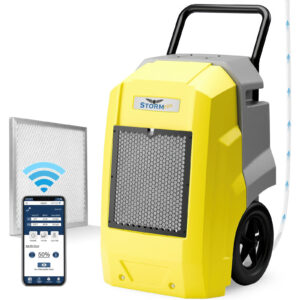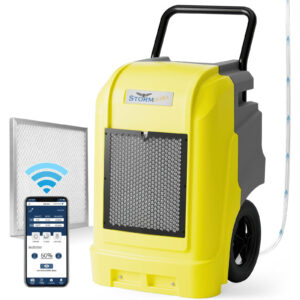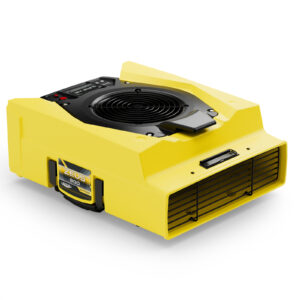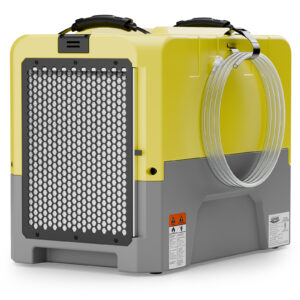You might be battling humidity and think, “Bingo! I’ll just go on the internet and purchase a dehumidifier.” Suddenly, you realize the large number of puzzling ( and at times costly) choices available. At this moment, you discover you have no clue what size dehumidifier you need. Selecting the correct air dehumidifier is key.
Picking up the proper size saves electricity, enhances air quality, and makes your house pleasant. Today, we’re here to provide a simple, practical guide on getting the right dehumidifier size by describing how to calculate your area, examine dampness levels, to solve the humidity issues in your house.
Why Sizing Matters in the Australian Climate?
In Australia, dampness can be a year-long problem. Coastal areas such as Northern NSW and Queensland mostly experience excessive humidity in the air. Southern states such as Tasmania and Victoria, on the other hand, face seasonal humidity, particularly in winter. These variations impact the way your air dehumidifier operates.
That said, when you choose a very small dehumidifier, it will work continuously, but even so, not dry the air. This results in high electricity bills and bad outcomes.
When the unit is too big, it might pause and begin frequently, misusing power and lowering its lifetime. The right dehumidifier size holds dampness in check without wasting electricity.
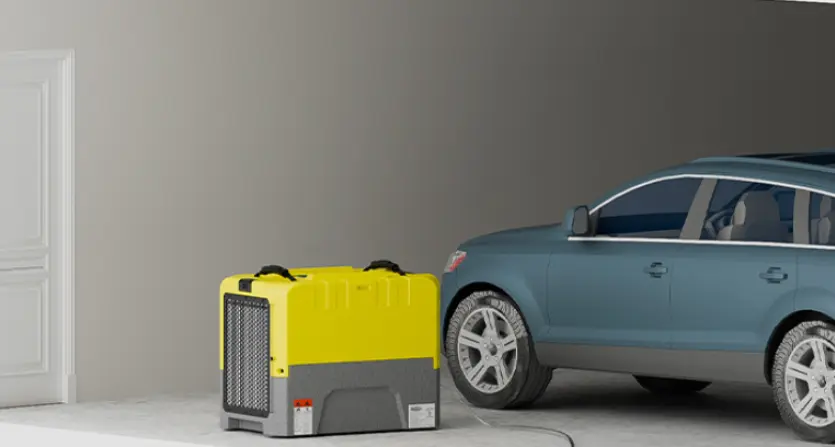
Besides, in Australia, energy costs are elevated. Several people need solutions that lower energy usage without dropping comfort. A properly sized air dehumidifier carries this out perfectly.
It extracts just the right volume of dampness, aiding in preventing mold, lowering smells, and saving furniture and walls from humidity.
This is the reason the question “What size dehumidifier do I need for my house?” is so common. It’s regarding getting trustworthy performance without overspending. Selecting the correct size means your dehumidifier operates efficiently and survives longer.
What Size Dehumidifier Do I Need?
The first step to get the right dehumidifier size is to check the size of your room and how humid it is.
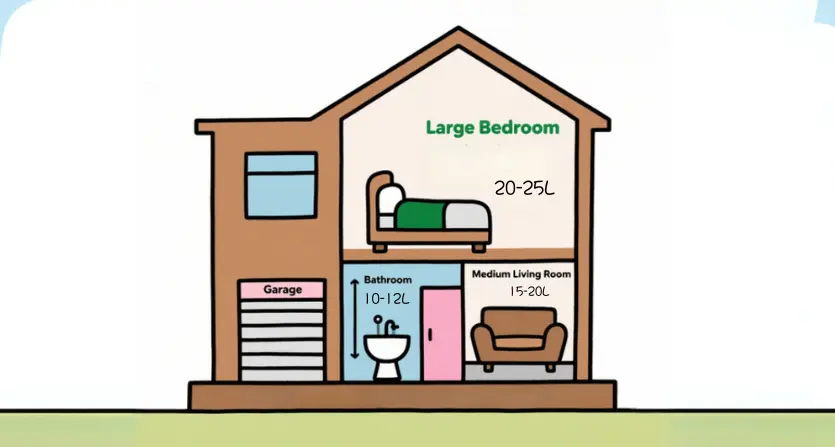
Moisture Levels: Damp or Wet? That Makes a Difference
The correct dehumidifier must suit the space’s square meters and the humidity level. Humidity levels change by season, locality, and room type. So, you should understand if the area is slightly humid, very humid, or wet. A dehumidifier size chart helps equal these two elements.
Confined rooms with little dampness require a smaller air dehumidifier. Bigger or too humid spaces require a larger one.
A commercial dehumidifier might be required for big spaces such as workrooms or garages, or spaces with water marks, puddles, or mold forming across surfaces. Every room is different, therefore, you should calculate and notice before purchasing.
For instance:
- A laundry room or bathroom with bad air circulation might require a 20-25 litre a day unit.
- A bedroom with little moisture might just require a 10-15 liter per day dehumidifier.
- A damp space or basement might require a 30+ litre dehumidifier or a commercial dehumidifier.
Utilize a hygrometer to assess humidity. A reading over 60% indicates high dampness. The best indoor range is 40% to 60%. This maintains the air healthy and decreases mold formation.
For those wondering what size dehumidifier do I need for 1000 sq ft, the answer rests on the humidity level of the area. As to a slightly humid 1000 sq ft area, a 20-25 litre per day unit should perform. For a damp area of that size, try 30 litres or more.
How to Measure Your Space Before You Buy?
To select the correct dehumidifier size, you need to assess the space. Apply this easy technique:
- Calculate the width and length of the room in meters.
- Multiply the two numbers to obtain the square meters (m²).
Example: 5 metres × 4 metres = 20 m²
Moreover, ceiling height carries weight. When the ceiling is more than 2.4 meters, you might require a powerful dehumidifier. Air volume rises with height, which suggests more dampness should be cleared away.
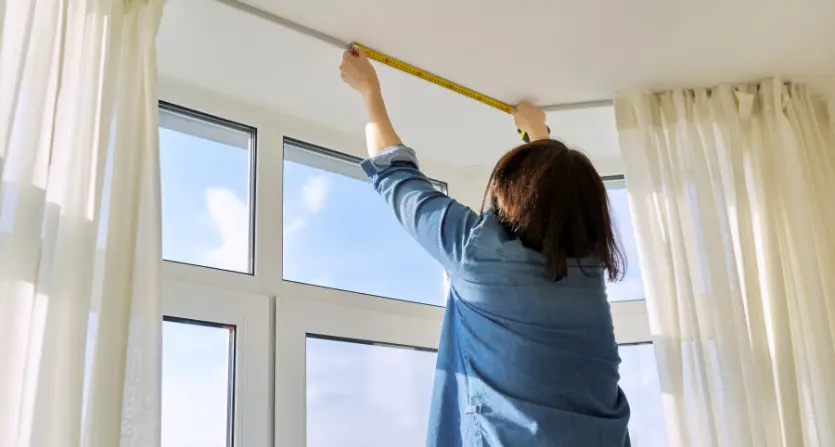
A few spaces require careful attention:
- Basements: Mostly have limited air circulation and greater humidity. These need powerful units.
- Bathrooms and Laundries: Routine dampness from showers and dryers makes them difficult to dry. Select an increased-capacity air dehumidifier here.
- Crawl Spaces: In stilt houses, these spaces gather ground dampness. A crawl space dehumidifier is best.
Besides, examine the air circulation also. Rooms having bad ventilation will keep more dampness. Recognize areas where humid air gathers that involves as under furniture, corners, or near windows.
Here comes the question: What size dehumidifier do I need for a bedroom? Start by evaluating the humidity level. A confined, dry bedroom might need a 10-12-litre dehumidifier. A humid one might need a 15-20 litre dehumidifier.
General Dehumidifier Size Guide (Metric & Real-World Examples)
Here’s a guide to help you fit a dehumidifier size with the size of the room and humidity level. Utilize it to choose the correct unit for your area. Below is the dehumidifier size chart:
Room Size ( m²) | Mildly Damp (Litres/day) | Very Damp (Litres/day) | Wet (Litres/day) |
Up to 20 m² | 10–12 L | 15–20 L | 20–25 L |
21–40 m² | 15–20 L | 20–25 L | 25–30 L |
41–60 m² | 20–25 L | 25–30 L | 30+ L |
61–100 m² | 25–30 L | 30+ L | Commercial unit |
Special Considerations for Australian Homes
The weather of Australia and house designs influence humidity control. A few spaces and housing styles require powerful solutions.
High-Humidity Areas
Too humid spaces, such as Northern NSW, Queensland, and the NT, have excessive humidity almost the entire year. Houses in such regions take advantage of greater-capacity dehumidifiers or constant drainage setups.
Low-Temperature States
Cold states like Tasmania, Victoria, and parts of South Australia face winter humidity. In these regions, the temporary usage of a dehumidifier is usual.
Advanced Houses
Present-day homes mostly have closed designs to enhance energy efficiency. Although this reduces cooling and heating prices, it also lowers air circulation. Bad ventilation can boost indoor dampness.
Houses Closer to Water
Homes near water or in spaces exposed to flooding experience greater humidity levels. These involve coastal characteristics and low-lying spaces. These areas might require a bigger unit or several units to maintain dry air.
Raised Homes
Elevated houses with crawl spaces are frequent in regional parts of NSW and Queensland. These underground areas keep moisture from the ground. A devoted crawl space dehumidifier assists in avoiding mold and property damage.
Tips to Maximise Dehumidifier Efficiency in Australia
For best results, operate your dehumidifiers properly. Easy practices assist in upgrading performance and lowering operating costs.
- Secure doors and windows when the dehumidifier is functioning. This stops outdoor air from pulling in more moisture.
- Run ceiling fans or exhaust setups to enhance air circulation. This aids in passing humid air toward the dehumidifier.
- Cleanse the filter routinely. That said, Australian houses mostly gather dust fast. A dirty filter shuts out airflow and reduces performance.
- Adjust the moisture level between 50%-55%. This scale holds the air dried out enough to prevent mold, and yet feel relaxing.
- Utilize drainage choices for continual usage. This is beneficial in damp spaces or during the rainy season. Several dehumidifiers permit hose connection for mechanical water removal.
- Examine leaks and insulation. Repairing roof or wall leaks and putting in insulation helps manage humidity long-term.
These advices assist your air dehumidifier to function well and last longer. They also reduce your utility bills and keep indoor air healthy.
Conclusion
Selecting the correct dehumidifier size is necessary for well-being, ease, and energy efficiency. To clarify what size dehumidifier do I need, this guide has stated a comprehensive answer. Suit your dehumidifier to the room size and humidity level. Look over particular conditions such as bad air circulation, crawl spaces, or high moisture areas. A properly-sized dehumidifier enhances air quality, clears away extra dampness, and helps avoid mold. It’s operates more effectively and saves money over time.



